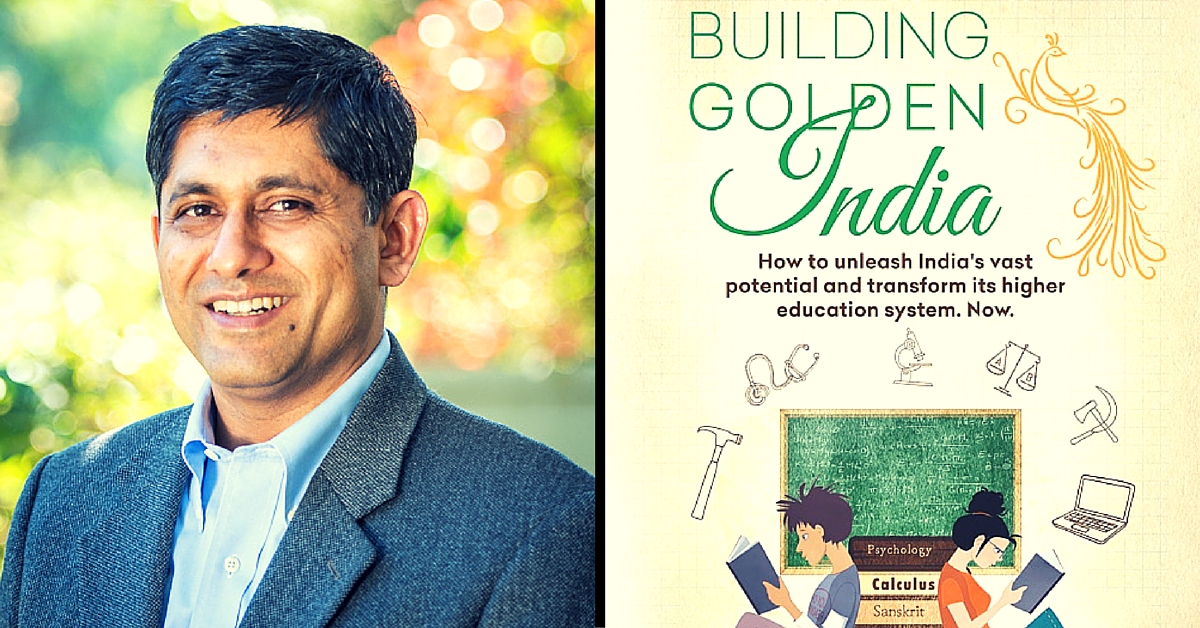MY VIEW: An IITian’s Roadmap to Building a Robust Higher Education System for India
India’s higher education system is in a crisis — it is broken on all fronts that matter and is disconnected from the needs and aspirations of its people, society and industry. But here are six ways in which it can be developed with the help of a revolution.

What is the common thread that ties rampant poverty across the country, the Chennai floods, the six-lane highway merging into a one-lane bridge in New Delhi, urban migration to Mumbai and other major metros, student suicides in Kota and Hyderabad, and the recent events in JNU?
It’s our higher education system. If the nerve centre of the body is faulty, every part suffers. India’s nerve centre is in crisis.
It is broken on all fronts that matter and is disconnected from the needs and aspirations of all its stakeholders – students, parents, society, industry, and the nation.

Picture for representation only. Source: Wikimedia
Consider this: the gross enrolment ratio to higher education in India is a mere 23% compared to developed nations where this ratio is anywhere from 50-100%. Our islands of excellence, the IITs, IIMs, and AIIMS, are all single-field institutions. This is an ineffective model that serves less than 0.5% of the enrolled students. Parents are spending $50 billion per year on private coaching and overseas education of their children. That is, they are either trying to improve their child’s chances to get into the premier institutions in India or completely giving up on the Indian education system. According to one study, 75-90% of students graduating from Indian institutions are considered unemployable. As a result, corporations are investing 6-12 months of training to prepare these graduates for productive work. Everyone is paying a hefty price for this broken and disconnected system.
Fortunately, India has done well in times of crisis. Remember the green revolution (at a time of food shortage), white revolution (during milk shortage), and the 1991 economic liberalization? We need a Grey Revolution, now.
What is Grey Revolution?

Picture for representation only. Source: Flickr
It is the need for urgent and comprehensive reforms to transform the higher education system on all the key dimensions – scale, scope, structure, excellence, impact, and speed. One way of thinking about this revolution is by imagining that you are building a new house.
Here are the six key steps:
1. Vision: Having clarity about the kind of house you want to have.
2. Team: Selecting an architect and a construction company to build it.
3. Cleaning up: Removing the hurdles and mess that come in the way of laying a foundation.
4. Foundation: Laying a base that would stand the test of time.
5. Rooms: Building the spaces that serve a unique purpose.
6. Roof: Making sure that main purpose of a home is served – having a roof over the head.
Each step and sequence is important. Would you start laying the foundation without having a vision and a plan? What would do you if you built the house and then realized that the builders had forgotten to include the right materials in the foundation? You get the drift.
Vision and Team:

Picture for representation only. Source: Flickr
We must aim to provide excellent education for all. United States, South Korea, Singapore, and many countries have demonstrated that universal access to excellent education is achievable. We need capable and committed leaders for the Grey Revolution.
Cleaning up:
We must discontinue the affiliated college system in which only over 75 % of the students get their credentials and is a bane of our undergraduate education. We must also eliminate the requirement of getting approvals and licenses to establish a new university from UGC, AICTE, and additional central and state government agencies.
Foundation:

Picture for representation only. Source: Flickr
We must nurture, recognize, and reward values of excellence, honesty, integrity, and hard work. Ultimately, the reputation and prestige of high-impact universities rests on the work and commitment of its faculty members. We must attract, prepare, and retain the best and brightest minds of the country to become faculty members. The salary and incentive structure must be decoupled from the rest of the government machinery. A tenure system, to foster higher accountability and better results, must be incorporated. Finally, Massive Open Online Courses (MOOCs), and technology-led innovation have to be the bedrock of our higher education system.
Rooms:
The country and the states need a mix of world-class multidisciplinary research universities, graduate colleges, and community colleges. Community colleges prepare students to reach research universities, colleges, or learn vocational skills. This is a proven model in the United States, a nation that leads the world in higher education. In addition, we must stop replicating the old models of narrowly specialized institutions such as IITs, IIMs, and AIIMS and focus more on the multidisciplinary research university model.
Roof:
Students are the most important stakeholders for colleges and universities, the largest segment of the college community, and the future of the society and nation. Thus, higher education institutions must focus on and deliver the best learning opportunities and pathways for student lives and careers.
We can do it!

India was once called the “Golden Bird.” We are 1.3 billion people strong. If we can send a rover to Mars, win Nobel prizes, entertain billions of people, and win medals in global competitions, we can surely transform India’s ailing higher education system.
Transforming India’s higher education is not just about human resource development; it is also about economy, defence, energy, environment, geopolitics, global competitiveness, health, and water. It is about fulfilling the aspirations of the youth and their families. It is also about a more prosperous and peaceful society.
Like this story? Or have something to share? Write to us: [email protected], or connect with us on Facebook and Twitter (@thebetterindia).

Similar Story

‘I Had Decided to Drop Out of IIT Entrance Exams, Until My Dad’s Words Changed My Life’
Ganesh Balakrishnan’s life took a turn when he faced health issues a month before his IIT-JEE exam. Despite feeling disheartened and at the verge of dropping out, his father’s advice helped him overturn his luck.
Read more >
If you found our stories insightful, informative, or even just enjoyable, we invite you to consider making a voluntary payment to support the work we do at The Better India. Your contribution helps us continue producing quality content that educates, inspires, and drives positive change.
Choose one of the payment options below for your contribution-
By paying for the stories you value, you directly contribute to sustaining our efforts focused on making a difference in the world. Together, let's ensure that impactful stories continue to be told and shared, enriching lives and communities alike.
Thank you for your support. Here are some frequently asked questions you might find helpful to know why you are contributing?


This story made me
-
97
-
121
-
89
-
167












